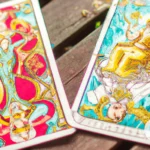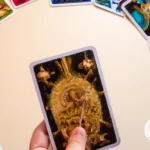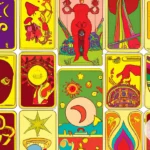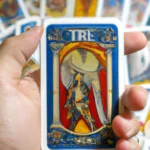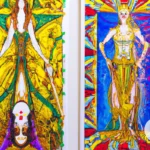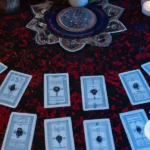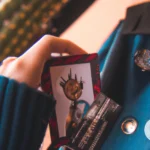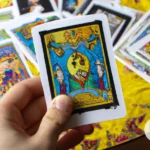Exploring the world of tarot cards can be an exciting yet perplexing journey, especially for beginners. There are numerous tarot decks available in the market, each differing in style, design, and symbolism. However, one of the oldest and most popular decks is the Marseille Tarot. If you are new to this deck, you might find yourself overwhelmed with the intricate illustrations and meanings of the cards. That’s why we created the ultimate guide to help you navigate through the Marseille Tarot Deck with ease. In the following sections, we will discuss the history and unique features of this deck, explore the meanings and interpretations of the Major and Minor Arcana cards, provide step-by-step instructions on how to read the cards, and offer tips to enhance your tarot reading skills. So, whether you are a seasoned tarot reader or just starting, grab your Marseille Tarot Deck, let’s dive in and discover the secrets of this enchanting divination tool.
What is Marseille Tarot Deck?
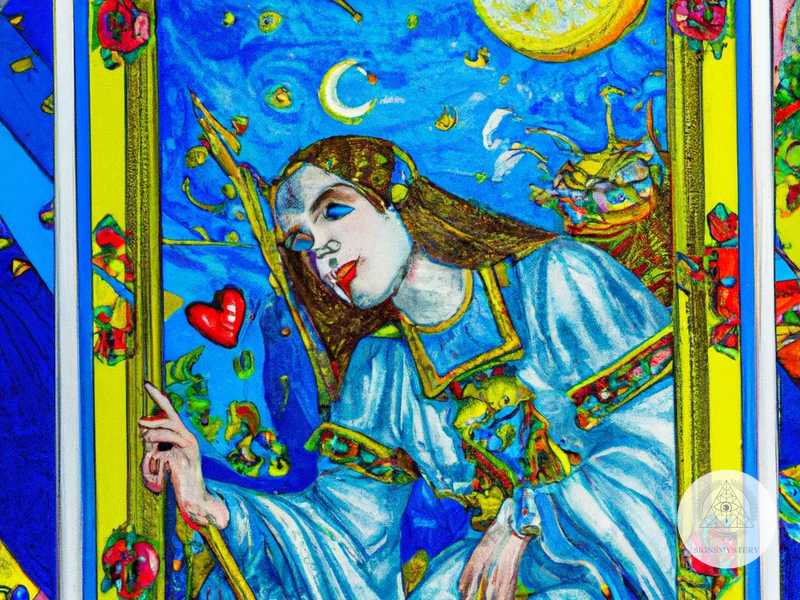
For those who are new to tarot reading or interested in exploring different tarot decks, the Marseille Tarot Deck may seem mysterious and unfamiliar. It is a unique and powerful tool for divination that has been used by practitioners for centuries. To understand the Marseille Tarot Deck, one must delve into its history and symbolism, as well as its major and minor arcana cards. In this article, we will explore what makes the Marseille Tarot Deck stand out from other decks, the meanings and interpretations of its cards, and how to read the Marseille Tarot Deck step-by-step. By the end of this guide, you will have a comprehensive understanding of this fascinating tarot deck and be able to utilize it for insightful readings. To learn more about the history and origin of the Marseille Tarot Deck, click here.
History of Marseille Tarot Deck
The Marseille Tarot Deck has a rich history and has undergone various changes throughout the centuries. Here are some of the significant milestones in its development:
- The earliest versions of the Marseille Tarot Deck can be traced back to the 14th century in Italy. However, the deck we know today took shape in France during the 16th and 17th centuries.
- The Marseille Tarot Deck’s illustrations are known for their simplicity and lack of scenic backgrounds. The cards focus on the figures and their symbolic meanings, which made them easy to produce and reproduce. This simplicity is what sets the Marseille Tarot apart from other decks.
- The Marseille Tarot Deck underwent crucial changes in the 18th century when French occultists incorporated more esoteric and mystical symbolism in the illustration. They also renamed some of the Major Arcana cards to match their mystical significance, which added a new dimension to the interpretation of the cards.
- More changes occurred in the 19th and 20th centuries, as new versions of the Marseille Tarot Deck were produced. Some decks features more intricate designs and additional symbolism while others reverted to the original simplistic version.
The Marseille Tarot Deck’s rich history and unique characteristics make it a fascinating tool for divination and self-discovery. Understanding the deck’s history is vital in comprehending its symbolism and interpreting its cards. If you want to learn more about the Major Arcana Cards of this deck, click here: /marseille-tarot-major-arcana/. For a detailed analysis of the Minor Arcana Cards, click here: /marseille-tarot-minor-arcana/. You can also compare the Marseille Tarot Deck with Rider-Waite Tarot, another popular deck, by clicking this link: /marseille-tarot-vs-rider-waite-tarot-major-differences/. To dive into the symbolism of Marseille Tarot, click here: /marseille-tarot-symbolism/. Lastly, if you want to know more about common spreads used in reading Marseille Tarot, click here: /common-marseille-tarot-spreads-insightful-readings/.
What Makes Marseille Tarot Deck Unique?
The Marseille Tarot Deck is a unique and distinct type of tarot deck that has been around for several centuries. It is known for its simplicity, yet also its depth and complexity in the symbolism depicted on the cards. Here are some of the key aspects that make the Marseille Tarot Deck stand out:
| Aspect | Description |
|---|---|
| Traditional Design | The Marseille Tarot Deck has a standard design with 78 cards consisting of the Major Arcana and Minor Arcana, each card depicting a different symbol or image. |
| Suit Symbolism | The Minor Arcana cards use suit symbols of swords, cups, coins, and batons, which have their distinct interpretations and meanings. |
| Number Symbolism | The numbers on the cards have significant meanings, adding layers of depth to the interpretations. |
| Bold Colors | The Marseille Tarot Deck uses bold colors, with the primary colors being red, yellow, and blue, which add a sense of vibrancy to the images and symbolism. |
| Non-Illustrated Minor Arcana | Unlike other tarot decks that have illustrated Minor Arcana cards, the Marseille Tarot Deck has non-illustrated Minor Arcana cards that rely on the suit symbol and number for interpretation. |
| Focus on Divination | The Marseille Tarot Deck is typically used for divination and fortune-telling, with a focus on providing guidance and insights for the present and future. |
All in all, the Marseille Tarot Deck provides a unique perspective and way of interpreting the symbolism on tarot cards. Its traditional design and focus on divination make it a popular choice for both beginners and experienced tarot readers alike.
The Major Arcana Cards
As we delve deeper into the world of Marseille Tarot, we come across a set of significant cards that hold immense importance in any reading – the Major Arcana cards. These powerful cards, represented by archetypes and symbols, reveal the core themes and life lessons that every individual must encounter on their journey. In this section, we explore the meaning, interpretation, and symbolism of each Major Arcana card, along with reading techniques and an intuitive approach to help beginners decode their messages. So, let’s take a proud step towards understanding the secrets of the Major Arcana cards.
Meanings and Interpretations
Understanding the meanings and interpretations of the cards is essential for any tarot reader, especially for beginners who are just starting to explore the Marseille Tarot Deck. In this section, we’ll explore the meanings and interpretations of the Major and Minor Arcana cards.
Major Arcana Cards:
- The Fool: Represents new beginnings, spontaneity, and innocence. Can also indicate foolishness or naivety.
- The Magician: Symbolizes creativity, skill, and manifestation. Can also indicate manipulation and trickery.
- The High Priestess: Represents intuition, mysteries, and hidden knowledge. Can also indicate secrecy and detachment.
- The Empress: Symbolizes abundance, nurturing, and creativity. Can also indicate overindulgence and laziness.
- The Emperor: Represents authority, structure, and stability. Can also indicate stubbornness and rigidity.
- The Hierophant: Symbolizes tradition, spirituality, and guidance. Can also indicate dogmatism and conformity.
- The Lovers: Represents partnerships, choices, and harmony. Can also indicate indecisiveness and temptation.
- The Chariot: Symbolizes control, willpower, and determination. Can also indicate aggression and recklessness.
- Strength: Represents inner strength, courage, and self-control. Can also indicate stubbornness and aggression.
- The Hermit: Symbolizes introspection, solitude, and wisdom. Can also indicate isolation and depression.
- Wheel of Fortune: Represents change, cycles, and destiny. Can also indicate chaos and unpredictability.
- Justice: Symbolizes fairness, balance, and accountability. Can also indicate legal issues and consequences.
- The Hanged Man: Represents surrender, sacrifice, and letting go. Can also indicate procrastination and fear of change.
- Death: Symbolizes transformation, rebirth, and endings. Can also indicate loss and painful changes.
- Temperance: Represents moderation, balance, and blending. Can also indicate indecision and lack of direction.
- The Devil: Symbolizes materialism, temptation, and bondage. Can also indicate addiction and self-destructive tendencies.
- The Tower: Represents upheaval, upheaval, and chaos. Can also indicate unexpected change and destruction.
- The Star: Symbolizes hope, inspiration, and serenity. Can also indicate lack of direction or self-doubt.
- The Moon: Represents illusion, fear, and intuition. Can also indicate deception and confusion.
- The Sun: Symbolizes joy, vitality, and success. Can also indicate overconfidence and arrogance.
- Judgement: Represents rebirth, awakening, and renewal. Can also indicate regret and fear of change.
- The World: Symbolizes completion, integration, and attainment. Can also indicate complacency and lack of growth.
Minor Arcana Cards:
- Wands: Represent inspiration, creativity, and energy. Can also indicate impatience and impulsiveness.
- Cups: Symbolize emotions, love, and intuition. Can also indicate moodiness and emotional turmoil.
- Swords: Represent intellect, logic, and analysis. Can also indicate conflict and adversity.
- Coins: Symbolize material possessions, security, and stability. Can also indicate stubbornness and greed.
It’s important to remember that these are just general meanings and interpretations, and that the cards can change depending on context and the individual reader’s intuition. As you become more familiar with the Marseille Tarot Deck, you’ll develop your own interpretations and insights.
Reading Techniques
When it comes to reading the Marseille Tarot Deck, there are various reading techniques that can be utilized. Each technique is designed to help the reader gain different insights and perspectives into the situation at hand. Below are some of the most common reading techniques used with the Marseille Tarot Deck.
| Reading Technique | Description |
|---|---|
| Celtic Cross Spread | A classic spread that involves 10 cards that are arranged in a cross pattern. This spread provides detailed insights into the querent’s life and the factors that are affecting it. |
| Three-card Spread | A simple spread that involves three cards that are drawn and interpreted to represent past, present, and future situations or influences. |
| One-card Spread | The simplest spread that involves drawing a single card and interpreting its meanings based on the question asked. This spread is useful for daily readings or quick insights. |
| Five-card Spread | A versatile spread that can provide insights into a specific situation or question. The cards are arranged in a cross pattern, with a fifth card drawn to represent the possible outcome. |
| Past-Present-Future Spread | A three-card spread that provides insights into the past, present, and future influences that are affecting the querent’s life. |
Each of these spreads can be adapted and customized to fit specific situations or questions. It’s important to remember that the spread doesn’t determine the outcome of the reading, but rather serves as a tool for the reader to gain insights and clarity. As with any reading technique, it’s important to keep an open mind and trust your intuition.
Symbolisms
The Marseille Tarot Deck is renowned not only for its historical significance but also for the rich symbolism that it contains. The cards in the Marseille Tarot Deck feature various symbols and imagery that hold deep meaning and serve as powerful tools for divination.
One of the most prominent symbols in the Marseille Tarot Deck is the pentacle, which appears on the cards of the suit of Coins. The pentacle represents wealth, material possessions, and financial stability. The sword is another important symbol that appears in the suit of Swords. The sword represents power, strength, and the ability to overcome obstacles.
In the Major Arcana, the fool card represents new beginnings and taking risks. The magician, on the other hand, represents creativity and the power to manifest one’s desires.
The death card, one of the most feared cards in the deck, signals transformation and the end of one phase of life to make way for another. The sun card, on the other hand, represents happiness, positivity, and success.
It’s worth noting that the symbolism of the Marseille Tarot Deck can be interpreted in different ways by different readers. While some symbols may have a generally accepted meaning, it’s up to the reader’s intuition and interpretation to fully understand their significance in a specific reading.
To further understand the symbolism of the Marseille Tarot Deck, it can be helpful to study the cards and reflect on their imagery. This can lead to a deeper understanding of the deck and enhance one’s abilities as a reader.
Here’s a table summarizing some of the symbols and their meanings in the Marseille Tarot Deck:
| Symbol | Meaning |
|---|---|
| Pentacle | Wealth, material possessions, financial stability |
| Sword | Power, strength, ability to overcome obstacles |
| Fool | New beginnings, taking risks |
| Magician | Creativity, ability to manifest desires |
| Death | Transformation, end of one phase to make way for another |
| Sun | Happiness, positivity, success |
As you can see, the symbolism of the Marseille Tarot Deck is intricate and nuanced. Understanding these symbols is key to fully interpreting the cards and providing meaningful readings.
Intuitive Approach
When it comes to reading the Marseille Tarot Deck, one approach that many readers take is an intuitive approach. This approach involves tapping into your inner sense of knowing and relying on your intuition to guide your understanding of the cards.
To start using an intuitive approach with the Marseille Tarot Deck, here are a few steps to follow:
1. Take some time to clear your mind. Before you begin a reading with the Marseille Tarot Deck, it’s important to take some time to clear your mind and ground yourself in the present moment. You might try meditation, deep breathing exercises, or simply taking a few moments to focus on your breath.
2. Look at the images on the cards. The Marseille Tarot Deck is known for its iconic and highly symbolic imagery. As you look at the cards, pay attention to the colors, the figures, and the surroundings depicted in each image. Allow your intuition to guide you as you begin to form associations and meanings based on what you see.
3. Consider the context of the question. When reading the Marseille Tarot Deck, it’s important to take into account the context of the question being asked. Is the question about love and relationships? Career and finances? Health and wellness? By taking into account the context of the question, you can begin to hone in on the most relevant aspects of the card meanings.
4. Trust your intuition. The most important aspect of an intuitive approach to reading the Marseille Tarot Deck is trust. Trust yourself and trust your intuition. As you begin to form associations and interpretations based on what you see and feel, follow your gut and allow yourself to be guided by your inner sense of knowing.
By taking an intuitive approach to reading the Marseille Tarot Deck, you can tap into the deep wisdom and insights of the cards in a way that is unique to you. Remember to stay true to your intuition, and always trust that you have the ability to connect with the cards in a meaningful way.
The Minor Arcana Cards
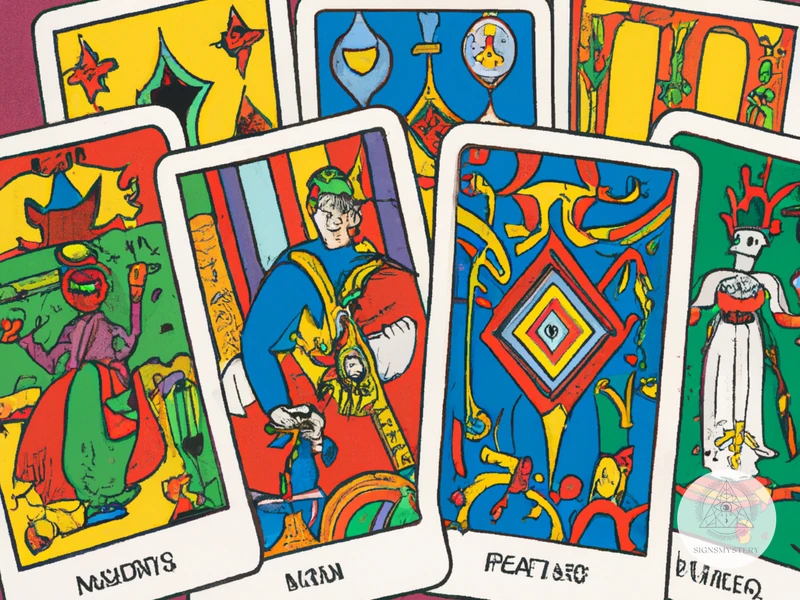
As we journey deeper into the world of Marseille Tarot Deck, we come across the lesser-known but equally important, the Minor Arcana cards. While the Major Arcana cards deal with universal energies and themes, the Minor Arcana cards shed light on the day-to-day events and challenges of life. There are 56 cards in this deck, divided into four suits- Swords, Wands, Cups, and Coins, each representing a specific aspect of life. In this section, we’ll explore the meanings, interpretations, reading techniques, and symbolisms of the Minor Arcana cards. Let’s dive into the fascinating world of the Marseille Tarot Deck’s Minor Arcana cards.
Meanings and Interpretations
The meanings and interpretations of each card in the Marseille Tarot Deck are essential for anyone who wants to become proficient in reading the cards. Each card has a range of interpretations that can vary depending on the context and the other cards in the spread. Below is a table outlining the general meanings of each of the Major Arcana cards.
| Card | Meaning |
|---|---|
| The Fool | Beginnings, innocence, spontaneity, a fresh start |
| The Magician | Creativity, confidence, action, manifestation |
| The High Priestess | Intuition, subconscious, mystery, hidden knowledge |
| The Empress | Fertility, abundance, nurturing, beauty, creativity |
| The Emperor | Authority, structure, stability, control |
| The Hierophant | Tradition, religion, the establishment, spiritual guidance |
| The Lovers | Love, relationships, choices, harmony, balance |
| The Chariot | Willpower, determination, victory, self-control |
| Strength | Courage, resilience, perseverance, inner strength |
| The Hermit | Soul-searching, introspection, wisdom, solitude |
| Wheel of Fortune | Cycles, change, destiny, fate, unexpected events |
| Justice | Fairness, balance, truth, legal matters |
| The Hanged Man | Sacrifice, patience, surrender, letting go, perspective |
| Death | Endings, transformation, release, rebirth, change |
| Temperance | Balance, moderation, harmony, healing, patience |
| The Devil | Temptation, materialism, addiction, bondage, illusions |
| The Tower | Disruption, chaos, upheaval, crisis, revelation |
| The Star | Hope, inspiration, faith, renewal, opportunity |
| The Moon | Intuition, emotions, dreams, uncertainty, anxiety |
| The Sun | Success, joy, positivity, vitality, accomplishments |
| Judgement | Awakening, rebirth, renewal, judgement, forgiveness |
| The World | Completion, fulfillment, travel, achievement, wholeness |
It’s important to note that the meanings of the Minor Arcana cards can vary depending on the suit and the individual card. For example, the Ace of Swords may represent a new idea or intellectual breakthrough, while the Six of Swords can signify a journey or the need to move forward. As you become more familiar with the Marseille Tarot Deck, it’s helpful to study the individual meanings of each card within the context of the suit and the overall spread.
Reading Techniques
There are several reading techniques that can be applied when working with the Marseille Tarot Deck. These techniques can aid in interpreting the cards and providing insights about different aspects of one’s life.
One reading technique is the three-card spread, which is ideal for beginners. This simple spread involves drawing three cards and interpreting them in relation to the question posed. The first card represents the past, the second represents the present, and the third represents the future. Another technique is the Celtic Cross spread, which is more complex and involves ten cards. This spread is ideal for getting a deep understanding of a situation and exploring different aspects of a problem.
Additionally, it is important to consider the symbolisms of the cards when interpreting them. Each card has a range of meanings and interpretations, and understanding the symbolism can provide insights into the situation being explored. For example, the Tower card represents a sudden change or upheaval, while the Death card represents transformation and rebirth.
When applying a intuitive approach, it is important to pay attention to one’s inner feelings and reactions to the cards. This can be done by focusing on the images and symbols of the cards and noting any thoughts or emotions that come to mind. This approach can be particularly helpful in gaining insights into one’s subconscious thoughts and motivations.
The reading techniques used with the Marseille Tarot Deck can vary depending on the individual reader and the question being explored. The key is to approach the cards with an open mind and a willingness to explore the symbolism and meanings in a thoughtful and insightful manner.
Symbolisms
The Marseille Tarot Deck is known for its heavy use of symbolism throughout each card. Each symbol serves as a tool to assist the reader in interpreting the card’s meaning within the context of the reading.
Here are some of the most important symbols found in the Marseille Tarot Deck:
- The Fool: This card is often represented by a man walking off a cliff, carrying a stick and a knapsack. The cliff symbolizes the unknown journey ahead, and the stick represents the support the fool will need. The knapsack represents the fool’s material possessions that can hinder the journey.
- The Magician: The Magician card features a man with one hand pointing towards the sky and one hand pointing downwards towards the ground. This represents the Magician’s ability to connect the spiritual world with the physical world. The Magician is also often accompanied by a table with symbols, representing the four elements.
- The High Priestess: The High Priestess is often depicted sitting between two large pillars with a veil behind her. The veil represents the barrier between the seen and unseen worlds that the High Priestess has access to. She is also often holding a book, representing knowledge and wisdom.
- The Hierophant: The Hierophant card is often portrayed as a religious figure. He is sometimes called the Pope or High Priest, representing spiritual authority and tradition. He is often surrounded by symbols of the church, such as crosses, candles, or vestments.
- The Tower: The Tower card often shows a tall building being struck by lightning. This represents a sudden or drastic shift or destruction, and can indicate unexpected changes or upheavals. The people in the card are often portrayed as falling or jumping out of the Tower.
- The Star: The Star card often features a woman pouring water into a river or a pond. This water represents renewal and rejuvenation, and the star in the card represents hope and guidance. The woman in the card is often naked or partially clothed, representing a vulnerability and openness to the universe.
- The Devil: The Devil card features a horned, winged creature with chains connecting two naked humans. This card represents temptation and desires that keep people chained to their earthly or material existence. The chains also represent enslavement to these desires.
- The World: The World card often depicts a figure surrounded by a wreath or garland. This represents the completion of a journey or task, as well as the interconnectedness of all things. The four elements are also often present in the corners of the card, representing balance and harmony.
Understanding the symbolism present in each card is crucial for accurately interpreting their meanings. It is important to pay attention to these symbols and their placement within the card, as they can provide important insights into the situation at hand.
Intuitive Approach
When it comes to the “Intuitive Approach” to reading the Marseille Tarot deck, there are no strict rules or regulations to follow. Intuition-based readings involve tapping into your own inner voice and relying on your instincts to interpret the cards. It allows you to connect more deeply with the cards and gain insights that may not be apparent through traditional interpretations.
Here are some tips for using an intuitive approach to read the Marseille Tarot deck:
| Tip | Description |
|---|---|
| 1. Trust your instincts | When relying on your intuition, it’s important to trust your instincts and let go of any preconceived notions or biases. This can be challenging, but with practice, you’ll learn to trust your inner voice and connect more deeply with the cards. |
| 2. Focus on the imagery | Marseille Tarot deck has highly symbolic imagery, which can be interpreted in numerous ways. When using an intuitive approach, focus on the imagery and let it inspire your interpretation. Pay attention to any particular symbols or images that stand out to you, and use them to guide your interpretation. |
| 3. Consider the emotions evoked by the cards | The Marseille Tarot deck is known for its raw, emotional imagery. Intuitive readings involve tapping into the emotional undercurrents of the cards and using them to guide your interpretation. Consider the emotions evoked by the cards and how they relate to your question or situation. |
| 4. Use your imagination | When using an intuitive approach, it’s essential to use your imagination and allow your mind to wander. Create stories or scenarios in your mind based on the cards you’ve drawn. By doing so, you can gain new insights and interpretations that are unique to you. |
| 5. Practice regularly | Intuitive reading is a skill that takes time and practice to develop. Try incorporating it into your regular tarot practice, and don’t be discouraged if it feels difficult at first. Over time, you will develop a deeper understanding and connection with the cards, allowing you to access your intuition more easily. |
By using an intuitive approach to read the Marseille Tarot deck, you can tap into your inner wisdom and gain unique insights into your questions and situations. Remember to trust your instincts, focus on the imagery, consider the emotions, use your imagination, and practice regularly to hone your skills.
How to Read Marseille Tarot Deck: Step-by-Step Instructions
Navigating through the Marseille Tarot Deck may seem daunting for beginners, but with the right guidance, reading the deck can be an insightful and rewarding journey. If you have gone through the previous sections and are ready to dive into the practical aspect of reading the Marseille Tarot Deck, you have come to the right place. In this section, we provide step-by-step instructions on how to read the Marseille Tarot Deck, from preparing for a reading to interpreting the cards, to ensure you are well-equipped to unveil the mysteries of the deck. So, let’s get started!
Preparing for a Reading
Before starting a reading with the Marseille Tarot deck, it’s important to prepare yourself and create the right environment for a successful session. Here are some steps to follow:
| Cleanse your deck: | Before starting a reading, it’s important to cleanse the deck of any negative or stale energy. You can do this by holding the deck in your hands and visualizing a bright light surrounding the cards, or by smudging them with sage or palo santo. |
| Set your intention: | Before shuffling the cards, it’s important to set a clear intention for the reading. This can be done silently or out loud, and should focus on what you hope to gain or learn from the reading. |
| Choose a quiet and comfortable space: | Find a quiet and comfortable space where you feel relaxed and focused. This can be a designated reading room or simply somewhere you feel at ease, such as your living room or bedroom. |
| Avoid distractions: | During a reading, it’s important to minimize distractions as much as possible. This means setting aside your phone or other electronics, closing any open windows or doors, and asking friends or family members to refrain from interrupting you. |
| Center yourself: | Before beginningSubscribe to Our NewsletterSign up to receive the latest news and updates. |
By following these steps and preparing yourself before a reading, you can create a clear and focused environment that allows you to connect with the cards and receive helpful insights and guidance.
Shuffling and Drawing the Cards
Shuffling and drawing the cards is an important part of any tarot reading, and the Marseille Tarot Deck is no exception. The way in which you shuffle and draw the cards can affect the outcome of your reading, so it’s important to do so with intention and care. Here are some steps to follow:
- Cleanse your space and your deck. Before beginning your reading, it’s important to cleanse your space and your tarot deck. You can use traditional methods such as smudging with sage or palo santo, or you can try other methods such as sound cleansing with bells or tuning forks.
- Focus on your question or intention. Take a few moments to focus on the question or intention for your reading. This will help guide the cards as you shuffle and draw them.
- Shuffle the cards. Use your preferred shuffling method to mix the cards thoroughly. It’s important to shuffle until you feel that the deck has been properly mixed and that no cards are sticking together.
- Draw the cards. You can either draw cards from the top of the deck or fan out the cards facedown and choose a card at random. Some readers like to cut the deck into three piles and choose the top card of the third pile. Choose a number of cards depending on the reading you are doing and the spread you are using.
- Arrange the cards. Once you’ve drawn your cards, arrange them in the order of the spread you are using. Take note of any reversed cards as well.
Remember, the way in which you shuffle and draw the cards is a personal process and can vary from reader to reader. It’s important to find a method that feels comfortable and natural to you. By following the steps above and approaching your reading with intention and care, you can open yourself up to the wisdom and guidance that the Marseille Tarot Deck has to offer.
Card Positions and Spreads
Before delving into how to read Marseille Tarot Deck, it is important to understand the different card positions and spreads that are commonly used. These positions and spreads determine the context of the reading and provide insight into the specific areas of life that the reading will focus on.
A card position refers to the location of the card within the overall spread. Each position has a specific meaning and interpretation, which can aid in understanding the card’s relevance to the question or topic at hand. Some common card positions in Marseille Tarot Deck include:
| Position | Meaning |
|---|---|
| The Past | Relates to past events and experiences that have led to the current situation. |
| The Present | Reflects the current situation and the energies surrounding it. |
| The Future | Represents the potential outcome or future direction of the situation. |
| The Self | Provides insight into the querent’s current state of mind, emotions, and behaviors. |
| The Environment | Reflects the external factors and influences that impact the situation. |
In addition to card positions, a spread refers to the overall layout of the cards. There are many different spreads that can be used for a Marseille Tarot Deck reading, each with a unique purpose and meaning. Some common spreads include:
| Spread | Meaning |
|---|---|
| Three-Card Spread | Provides insight into the past, present, and future of a situation. |
| Celtic Cross Spread | Comprises ten cards and offers a comprehensive overview of a situation, identifying challenges, opportunities, and possible outcomes. |
| Horseshoe Spread | Comprises seven cards and is used to explore a particular issue or question, offering insights into past events, current influences, and potential outcomes. |
When deciding on a spread, it is important to consider the topic or question at hand as well as the amount of detail desired. Some spreads, like the three-card spread, are simple and straightforward, offering a quick and concise overview of the situation. Other spreads, like the Celtic Cross, provide a more in-depth exploration of the situation, offering guidance and insights into specific aspects of the situation.
Understanding card positions and spreads is essential to performing accurate and insightful Marseille Tarot Deck readings. By selecting the appropriate spread and interpreting the cards in their respective positions, readers can offer meaningful guidance and insights into the querent’s situation.
Interpreting the Cards
Interpreting the cards is the most important aspect of a tarot reading. Once you have drawn your cards, the next step is to interpret their meanings based on their position and the context of the question being asked.
Card interpretation can be both straightforward and complex, and it requires a combination of knowledge, intuition, and experience. Each card has its own set of meanings and symbolism, which can change depending on its position in the spread and the surrounding cards.
In order to interpret the cards accurately, you need to consider the following factors:
| Factor | Description |
|---|---|
| Card meaning | Each card has a basic meaning that provides a foundation for your interpretation. |
| Card position | The position of the card in the spread can change its meaning and provide additional insights into the question being asked. |
| Card symbolism | The symbolism on each card can provide additional context and meaning to the card’s basic interpretation. |
| Card combination | The combination of cards in a spread can also change their meanings and provide additional insights into the question being asked. |
| Intuition | Your intuition and psychic abilities play a crucial role in interpreting the cards. |
Here are some steps you can follow when interpreting the cards:
1. Look at the card and identify the basic meaning of the card.
2. Consider the position of the card in the spread and how it affects its meaning.
3. Look at the symbolism on the card and see if it provides any additional insights.
4. Consider the other cards in the spread and how they interact with the card you are interpreting.
5. Use your intuition and psychic abilities to gain additional insights and meanings.
6. Relate the card’s interpretation back to the question being asked and provide any advice or guidance as needed.
Remember, interpreting the cards is an iterative process that requires practice and experience. As you gain more experience with the Marseille Tarot Deck, you will become more comfortable with interpreting the cards and developing your own unique interpretation style.
Tips for Reading Marseille Tarot Deck
As a beginner learning to read the Marseille Tarot Deck, it’s normal to feel unsure about where to start. While memorizing the meanings of the cards is important, there are other tips and tricks you can use to enhance your reading skills. In this section, we’ll provide you with helpful tips for reading the Marseille Tarot Deck that will improve your understanding of the cards and develop your intuition. By incorporating these tips into your practice, you’ll soon feel more confident and proficient in your readings. Let’s get started!
Trust your Intuition
Trusting your intuition is a vital aspect of reading the Marseille Tarot Deck. When interpreting the cards, it’s essential to rely on your inner voice and insights rather than just memorizing the meanings of the cards. Here are some ways to trust your intuition during a reading:
1. Connect with the cards: Take a few deep breaths, and hold the cards between your palms. Close your eyes and focus on your breathing to get into a relaxed and meditative state. When you feel ready, open your eyes and start drawing the cards.
2. Analyze your first impression: When you draw the cards, study them carefully, and take note of your first impression. What thoughts or feelings do you get from the cards? Your initial response can be significant because it comes from your subconscious mind, bypassing your logical thinking.
3. Listen to your inner voice: As you start interpreting the cards, pay attention to your inner voice. What sensations or insights arise as you see the cards’ symbols and colors? Don’t dismiss your intuition as irrelevant or illogical. Trust yourself even if your interpretation seems unconventional.
4. Use your imagination: Allow your imagination to run wild when interpreting the cards. The Marseille Tarot Deck consists of striking images open to multiple interpretations. Visualize yourself in the card’s setting and interact with the characters or objects present in the images. This technique sparks creativity and helps you connect with your intuition.
5. Practice regularly: Like any skill, trusting your intuition requires practice. The more you work with the Marseille Tarot Deck, the more in tune you become with your inner voice. Over time, your intuition becomes honed, and you’ll be more confident in your readings.
Remember that the interpretation of the Marseille Tarot Deck is subjective and personal to each reader. Trusting your intuition allows you to develop a unique interpretation style that resonates with you. By trusting yourself, you can provide meaningful and insightful readings.
Practice Regularly
Regular practice is essential for improving your Tarot reading skills. The more you work with your Marseille Tarot deck, the more insights you will gain into the cards and the symbolism they represent. Here are some tips for practicing regularly:
- Set aside time for daily practice: It doesn’t have to be a long time, but make it a priority to spend some time each day working with your cards. This will help you to build your familiarity with the deck and improve your ability to interpret the cards.
- Try different spreads: Don’t limit yourself to just one or two spreads. Experiment with different types of spreads and card positions to broaden your knowledge and understanding of the cards.
- Work with others: Consider joining a Tarot group or finding a study partner who is also interested in Tarot. Working with others can offer new insights and perspectives on the cards.
- Reflect on your readings: After each reading, take some time to reflect on the cards and the meanings you derived from them. Consider how they apply to your life or the situation at hand.
- Make it a habit: The key to regular practice is making it a habit. Try to incorporate Tarot into your daily routine and stick to it as much as possible.
Remember, the more you practice, the more confident you will become in your ability to read the Marseille Tarot deck. Don’t be discouraged if you don’t get it right every time, as it takes time and practice to develop your skills. Keep at it and have patience, and you will soon see improvement in your readings.
Keep a Tarot Journal
One useful tip for beginners who are learning how to read Marseille Tarot Deck is to keep a tarot journal. A tarot journal is a record of your tarot readings, interpretations, and personal insights. Here are some reasons why keeping a tarot journal is a valuable practice:
- Track Your Progress: Writing down your interpretations and impressions can help you see how your understanding of the cards progresses over time. You can also track your accuracy and note any patterns that emerge in your readings.
- Clarify Your Thoughts: When you write down your thoughts and feelings about a reading, it can help you gain clarity and insight into the meaning of the cards.
- Record Important Details: Keeping a tarot journal allows you to record important details about your readings, such as the date, time, location, and any specific questions or concerns you had when you did the reading. This information can be helpful when you look back on your readings in the future.
- Personalize Your Interpretations: Your tarot journal can be a place to record your unique interpretations of the cards, using your own personal symbols, imagery, and language. This can help you connect with the cards on a deeper emotional level.
- Deepen Your Understanding: As you write about your experiences with the tarot, you may discover new insights and perspectives that deepen your understanding of the cards and their meanings.
Keeping a tarot journal can be a valuable tool for anyone who is learning how to read Marseille Tarot Deck. It allows you to track your progress, clarify your thoughts, record important details, personalize your interpretations, and deepen your understanding of the cards. Whether you are a beginner or an experienced reader, taking the time to reflect on your tarot experiences can help you grow as a reader and gain a deeper appreciation for the art of tarot.
Conclusion
In conclusion, the Marseille Tarot Deck is a powerful tool for divination and self-discovery. Its origins can be traced back to the 15th century, making it one of the oldest and most popular tarot decks in the world. The deck consists of 78 cards, each with its own unique symbolism and meaning.
The Major Arcana cards represent major life events and archetypal energies, while the Minor Arcana cards offer insight into everyday situations and challenges. Both sets of cards can be interpreted using a variety of techniques, including traditional meanings, symbolism, and intuition.
Learning to read the Marseille Tarot Deck takes time and practice, but the rewards are well worth the effort. By tuning into your intuition and developing your tarot reading skills, you can gain valuable insights into your own life and the lives of others.
Remember to trust your intuition and approach each reading with an open mind. Keep a tarot journal to track your progress and deepen your understanding of the cards. With regular practice and a willingness to learn, you can become a skilled tarot reader and use the Marseille Tarot Deck to unlock the secrets of the universe.
Frequently Asked Questions
What type of tarot deck is Marseille Tarot?
Marseille Tarot is a type of tarot deck that originated in France during the 16th century.
What are the major arcana cards in the Marseille Tarot Deck?
The major arcana cards in the Marseille Tarot Deck consist of 22 cards that hold significant symbolic meanings and interpretations.
What are some common techniques used to read major arcana cards in the Marseille Tarot Deck?
Some common techniques used to read major arcana cards in Marseille Tarot include exploring the symbolisms, interpreting the meanings and studying the illustration on the cards.
What are the minor arcana cards in the Marseille Tarot Deck?
The minor arcana cards in the Marseille Tarot Deck consist of 56 cards and are divided into four suits – Wands, Cups, Swords, and Pentacles.
What are some common techniques used to read minor arcana cards in the Marseille Tarot Deck?
Some common techniques used to read minor arcana cards in the Marseille Tarot Deck include studying the colors, number, and symbols present on the cards and interpreting them in reference to the suit they belong to.
What spread is best for beginners reading the Marseille Tarot Deck?
A simple three-card spread is best for beginners reading the Marseille Tarot Deck in which the first card represents past, the second card represents present and the third card represents future.
What should one do to prepare themselves for a reading with Marseille Tarot Deck?
One should meditate, clear their mind of distractions and focus their intention before a reading with the Marseille Tarot Deck.
Can the Marseille Tarot Deck be used for predicting the future?
Yes, the Marseille Tarot Deck can be used for predicting the future, but it is recommended to approach the reading as a tool for guidance and self-reflection rather than a concrete prediction.
What should be done if a card is drawn upside down during a reading with the Marseille Tarot Deck?
If a card is drawn upside down, it is known as a reversal and holds a different meaning from its upright position. One should explore the potential interpretations that can be derived from a reversed card.
What is the importance of intuition while reading the Marseille Tarot Deck?
Intuition plays an important role while reading the Marseille Tarot Deck as it helps the reader to connect with the cards and interpret their meanings in a more personal and intuitive way.



